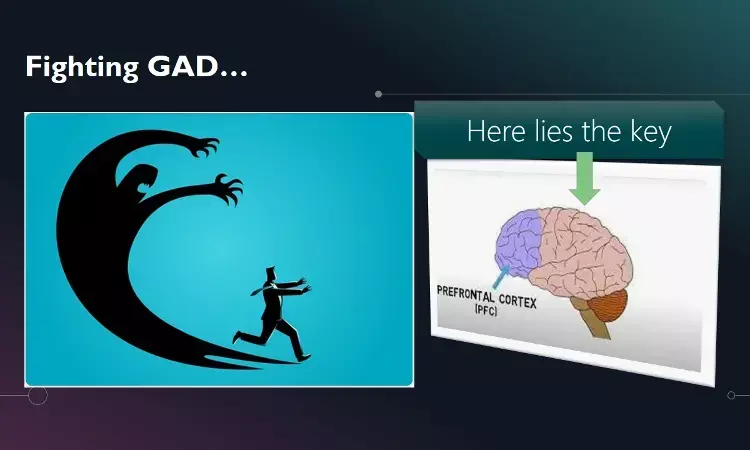- Home
- Medical news & Guidelines
- Anesthesiology
- Cardiology and CTVS
- Critical Care
- Dentistry
- Dermatology
- Diabetes and Endocrinology
- ENT
- Gastroenterology
- Medicine
- Nephrology
- Neurology
- Obstretics-Gynaecology
- Oncology
- Ophthalmology
- Orthopaedics
- Pediatrics-Neonatology
- Psychiatry
- Pulmonology
- Radiology
- Surgery
- Urology
- Laboratory Medicine
- Diet
- Nursing
- Paramedical
- Physiotherapy
- Health news
- Fact Check
- Bone Health Fact Check
- Brain Health Fact Check
- Cancer Related Fact Check
- Child Care Fact Check
- Dental and oral health fact check
- Diabetes and metabolic health fact check
- Diet and Nutrition Fact Check
- Eye and ENT Care Fact Check
- Fitness fact check
- Gut health fact check
- Heart health fact check
- Kidney health fact check
- Medical education fact check
- Men's health fact check
- Respiratory fact check
- Skin and hair care fact check
- Vaccine and Immunization fact check
- Women's health fact check
- AYUSH
- State News
- Andaman and Nicobar Islands
- Andhra Pradesh
- Arunachal Pradesh
- Assam
- Bihar
- Chandigarh
- Chattisgarh
- Dadra and Nagar Haveli
- Daman and Diu
- Delhi
- Goa
- Gujarat
- Haryana
- Himachal Pradesh
- Jammu & Kashmir
- Jharkhand
- Karnataka
- Kerala
- Ladakh
- Lakshadweep
- Madhya Pradesh
- Maharashtra
- Manipur
- Meghalaya
- Mizoram
- Nagaland
- Odisha
- Puducherry
- Punjab
- Rajasthan
- Sikkim
- Tamil Nadu
- Telangana
- Tripura
- Uttar Pradesh
- Uttrakhand
- West Bengal
- Medical Education
- Industry
Decoding Generalized anxiety disorder: JAMA study hints at new target site in prefrontal cortex

Do individuals with generalized anxiety disorder (GAD) show abnormal physiological, or neural responses during sympathetic stimulation that may indicate interoceptive dysfunction? In a recently published crossover randomized trial in JAMA Psychiatry, authors Teed et al have shown that female patients with GAD exhibit hypersensitivity to adrenergic stimulation as well as greater interoceptive sensation and diminished ventromedial prefrontal cortex activity compared with healthy participants. This study suggests that the ventromedial prefrontal cortex may be a future treatment target for GAD.
β-Adrenergic stimulation elicits heart palpitations and dyspnea, key features of acute anxiety and sympathetic arousal, yet no neuroimaging studies have examined how the pharmacologic modulation of interoceptive signals is associated with fear-related neurocircuitry in individuals with generalized anxiety disorder (GAD).
Teed et al sought to examine the neural circuitry underlying autonomic arousal induced via isoproterenol, a rapidly acting, peripheral β-adrenergic agonist akin to adrenaline. Functional magnetic resonance imaging was used to assess neural responses during randomized intravenous bolus infusions of isoproterenol (0.5 and 2.0 μg) and saline, each administered twice in a double-blind fashion.
Blood oxygen level–dependent responses across the whole brain during isoproterenol administration in patients with GAD vs healthy comparators. Cardiac and respiratory responses, as well as interoceptive awareness and anxiety, were also measured during the infusion protocol.
Of the 58 female study participants, 29 had GAD and 29 were matched healthy comparators. During the 0.5-μg dose of isoproterenol, the GAD group exhibited higher heart rate responses, higher intensity ratings of cardiorespiratory sensations, and higher levels of self-reported anxiety. This group also had significant hypoactivation in the ventromedial prefrontal cortex (vmPFC) that was evident throughout peak response and early recovery periods.
Of note, vmPFC activation differences were moderately to strongly correlated with HR and cardiorespiratory self-report during the 0.5-μg infusion. There was a lack of group differences in physiological or neural responses to saline or the 2.0-μg infusion which highlights the GAD group's sensitivity to sympathetic arousal signals during lower levels of adrenergic stimulation.
The present experimental medicine findings provide novel evidence of autonomic and central nervous system contributions to the interoceptive pathophysiological mechanisms of GAD.
"The blunted vmPFC activation together with the exaggerated self-reported and physiological responses support the idea that a lack of top-down regulation in the presence of a bottom-up sympathetic nervous system stimulation elicits an internal state that further promotes an anxious response", write authors in discussion.
The vmPFC and anterior cingulate cortex (ACC) are highly connected with the dorsolateral PFC and have been observed to be inhibited by worry induction. This circuit could help to explain the chronic high-anxiety state typical in GAD.
"Autonomic hyperarousal may be linked to regulatory dysfunctions in the vmPFC, which could serve as a treatment target to help patients with anxiety more appropriately appraise and regulate sympathetic arousal signals emanating from the autonomic nervous system", conclude the authors.
Source: JAMA Psychiatry: http://jamanetwork.com/article.aspx?doi=10.1001/jamapsychiatry.2021.4225
M.B.B.S, M.D. Psychiatry
M.B.B.S, M.D. Psychiatry (Teerthanker Mahavir University, U.P.) Currently working as Senior Resident in Department of Psychiatry, Institute of Human Behaviour and Allied Sciences (IHBAS) Dilshad Garden, New Delhi. Actively involved in various research activities of the department.
Dr Kamal Kant Kohli-MBBS, DTCD- a chest specialist with more than 30 years of practice and a flair for writing clinical articles, Dr Kamal Kant Kohli joined Medical Dialogues as a Chief Editor of Medical News. Besides writing articles, as an editor, he proofreads and verifies all the medical content published on Medical Dialogues including those coming from journals, studies,medical conferences,guidelines etc. Email: drkohli@medicaldialogues.in. Contact no. 011-43720751


